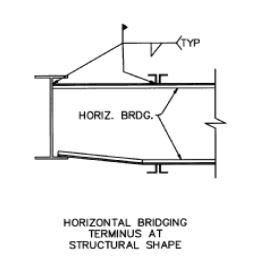EngStuff
Structural
- Jul 1, 2019
- 81
One thing I don't understand and need a little input. When we have a steel building with end beams being W-shape but interior beams being Web Joists (see vulcraft pic below). When I see this type of bridging shown below. I get a little confused about something. To break my question into 2 parts. Q1 gravity with no uplift. Q2 uplift included.
Q1. Assuming it's a floor with gravity load only. The bottom horiz. bridging is in tension in this case. but can't the bottom flanges of all joists and the end W-shape beams fail by twisting together in one direction?
Q2. Assuming it's a roof with uplift load only. The bottom horiz. bridging is now in compression in this case. Same as above, can't the bottom flanges of all joists and the end W-shape beams fail by twisting together in one direction?
Don't we need to have X bridging at the end? or is there a reason why we don't use x bridging at the ends when we have W-shape beams as end beams? Thanks.

Q1. Assuming it's a floor with gravity load only. The bottom horiz. bridging is in tension in this case. but can't the bottom flanges of all joists and the end W-shape beams fail by twisting together in one direction?
Q2. Assuming it's a roof with uplift load only. The bottom horiz. bridging is now in compression in this case. Same as above, can't the bottom flanges of all joists and the end W-shape beams fail by twisting together in one direction?
Don't we need to have X bridging at the end? or is there a reason why we don't use x bridging at the ends when we have W-shape beams as end beams? Thanks.



